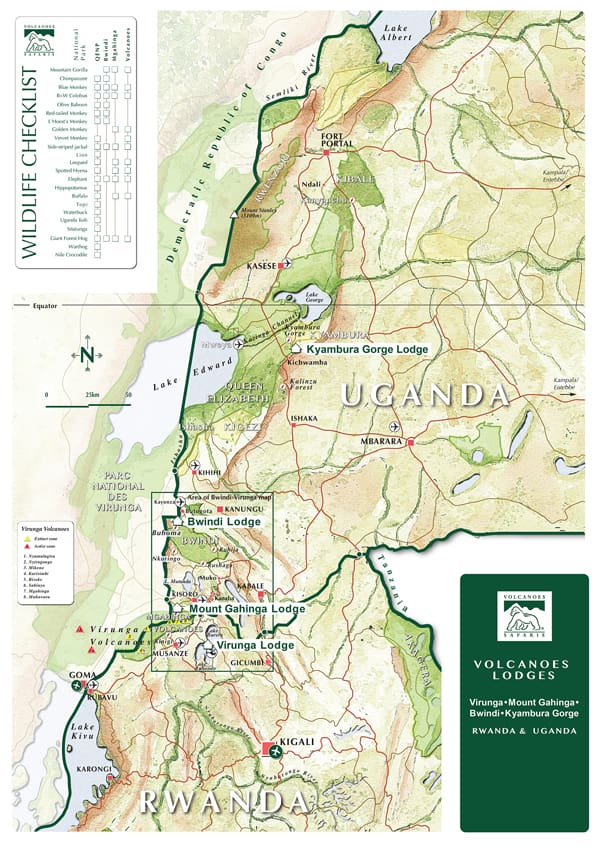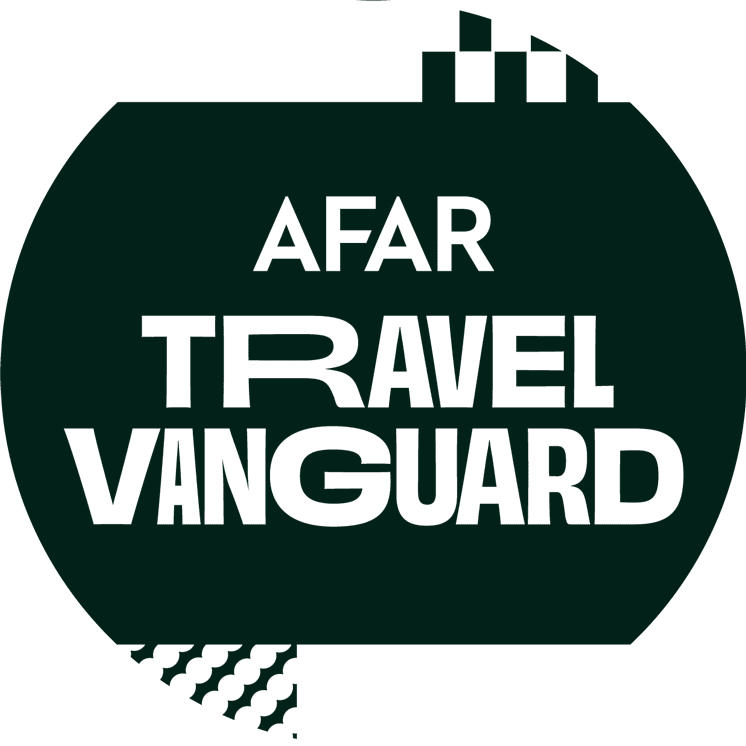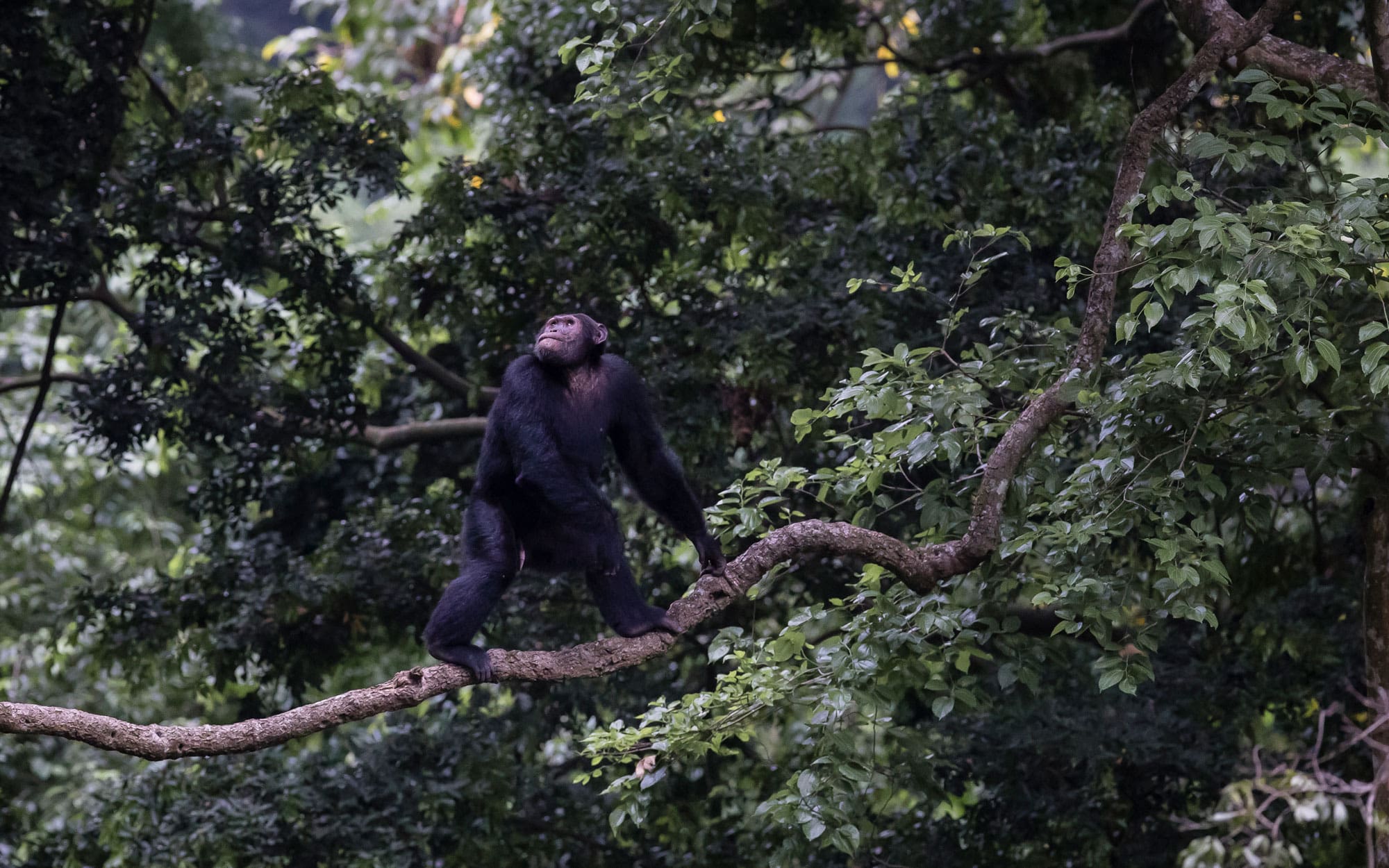Who can track the gorillas
Trackers must be fit and in good health. Tracking in thick forest at heights of up to 3,000 metres, traversing steep-sided mountains and ravines, can be arduous, especially if it is wet. To protect gorillas from disease, no children under 15 are allowed to go gorilla tracking. People who are ill on the day of the tracking may be denied. To minimize the possible transmission of human diseases, visitors are asked to maintain a distance of seven metres (about 22 feet) from the gorillas.
Gorilla tracking permits
Only a limited number of permits are available in each gorilla park. It is therefore essential to book well in advance. Permits need to be paid for at the time of the initial safari booking so that they can be purchased immediately. A delay in payment can result in permits not being secured for the intended dates. A percentage of the gorilla permit fee goes to communities living around the gorilla parks.
Gorilla tracking permits are non-refundable, except for medical reasons, in which case a medical certificate must be provided. Gorilla viewing can occasionally be denied at short notice because of National Park or border closures, security changes or gorillas moving out of range. In such rare circumstances, refunds are at the discretion of the authority and are not within the company’s control. Obtaining a gorilla permit therefore is not a guarantee of seeing a gorilla.
Gorilla tracking rules
At the National Park headquarters, ranger guides explain the rules for tracking gorillas. These are designed for both you and the gorillas’ protection and must be followed.
One hour is allowed with the gorillas, at a distance of at least 7 metres. Flash photography is not permitted, so fast film is useful (400-1600 ASA). Personal DVD recorders are allowed. Professional film makers require permission to film in the National Parks and need to purchase filming permits. This can be arranged through the Volcanoes Safaris sales team.
Guests visiting national parks in Uganda and Rwanda do not need a COVID-19 test.
Gorilla Parks and Gorilla Families
The Mountain gorilla lives in four parks in Uganda, Rwanda and the Democratic Republic of the Congo (DRC). In Uganda the gorillas can be trekked in Bwindi Impenetrable Forest National Park and Mgahinga National Park.
In Rwanda the Gorillas can be tracked in the Parc National des Volcans (PNV) where the famous Primatologist Dian Fossey conducted her ground-breaking research.
Virunga National Park in the DRC also has a number of habituated gorilla families but Volcanoes Safaris does not currently take clients there.
UGANDA
Uganda has 19 habituated gorilla families with eight permits available daily for each family group.
17 of the 18 habituated gorilla families live in the thick tropical forest of Bwindi Impenetrable Forest. Bwindi’s steep hillsides make tracking more challenging than Mgahinga National Park in Uganda and PNV in Rwanda. Trekking the mountain gorillas in Bwindi can take 3-10 hours after leaving the Park headquarters.
4 of Bwindi’s Gorilla families (Mubare, Habinyanja, Katwe, Rushegura) are accessed from Buhoma in the north, for guests staying at Volcanoes Safaris’ Bwindi Lodge. 4 other families are accessed from the Ruhija sector of the forest Mukiza, Kyaguriro, Oruzogo, Bitukura) approx. 2 hours drive from Bwindi Lodge. 1 family (Nyakagezi) can be tracked in the Mgahinga National Park for guests staying at Mount Gahinga Lodge and an additional 10 gorilla families are located in Southern Bwindi in Nkuringo (Nkuringo, Bushaho, Christmas) approx. 2 hours drive from Mount Gahinga Lodge, and Rushaga (Nshongi, Kahungye, Mishaya, Busingye, Bweza, Bikyingi, Kutu), approximately 2.5 hours drive for guests staying at Mount Gahinga Lodge.
Buhoma:
The Mubare Family: 8 members including 1 silverback.
Mubare is the oldest habituated gorilla group in Bwindi. The group is named after the Mubare Hills, where the family was first spotted and was habituated between 1991 and 1993. The family is led by silverback Kanyonyi.
The Habinyanja Family: 15 members plus 1 silverback.
Habinyanja means ‘body of water.’ This family was habituated in 1997. It was a massive family group that split into two families, the other being the Rushegura family.
The Katwe Family: 7 members and 1 silverback
The Rushegura Family: 14 members plus 1 silverback
The family was habituated in 2000. It is named after the place where this group separated from the larger family of Habinyanja. Their name is taken from a tree species that grows in their home area, ‘Ebishegura’. They are a calm group and often visit the Bwindi Lodge gardens.
Ruhija:
The Oruzogo Family: 15 members including 3 silverbacks.
The group was named after the local name of a common plant in this gorilla family’s home range.
The Muzika Family: 13 members plus 1 silverback.
The Kyaguriro Family: 8 members plus 1 silverback
The Bitukura Family: 11 members including 2 silverbacks
The family is one of the newer groups in the Impenetrable Forest and was named after the Bitukura river. Their habituation started in 2007 and tracking began in 2008.
Rushaga:
The Nshongi Family: 7 members with 1 silverback.
The group was named after the river close to where this gorilla family was first sighted. Nshongi was the largest group to be habituated and were first tracked in 2009.
The Kahungye Family: 16 members including 3 silverbacks.
The group was named after the Kahungye Hill. Visitors have been tracking this family since 2011.
The Mishaya Family: 8 members and 1 silverback.
The Busingye Family: 12 members and 1 silverback.
The Kutu Family: 8 members and 1 silverback.
The Bikingi Family: 21 members including 1 silverback.
The Bweza Family: 10 members including 3 silverbacks.
Nkuringo:
The Nkuringo Family: 14 members with 2 silverbacks
The family was named after the Nkuringo Hill where the group was first spotted. They were originally habituated in 2004 because of difficulties caused by their destroying crops of local farmers. Now farmers benefit from the tourism they provide.
The Bushaho Family: 11 members and 1 Silverback.
The Christmas Family: 9 members and 1 Silverback (this family is currently unavailable due to disintegration).
Mgahinga National Park:
The Nyakagezi Family: 10 members, including 5 silverbacks.
Although this group gained a reputation for being nomadic (crossing the borders of Uganda, Rwanda and the DRC) they have been resident in Uganda for nearly 5 years. They are the oldest habituated mountain gorilla group in Uganda.
5 minutes from Mount Gahinga Lodge through a direct private footpath to access the forest.
RWANDA
Parc National des Volcans (PNV) in Rwanda has twelve habituated gorilla families with 8 permits available daily for each group.
The Susa group: 24 members including 3 silverbacks.
Susa was the largest gorilla group before it split into two and was named after the Susa river. It was the group originally studied by Dian Fossey and is popular because of a pair of twins, Byishimo and Impano.
The Sabyinyo group: 20 members including 2 silverbacks.
The group was named after the rugged Sabyinyo Volcano. Sabyinyo means ‘old man’s teeth’ and the group is known to stay between the mountains Sabyinyo and Gahinga, enjoying the gentle slopes and easy terrain.
The Amahoro group: 24 members including 1 silverback.
Amahoro means ‘peaceful’ and the group is usually extraordinarily gentle and peaceful, which is why they were given the name. It is a tougher climb to reach them, though.
The Umubano group: 14 members including 1 silverback.
Umubano means ‘live together’ as the group originally formed when it split from the Amahoro group. They still share much of the same territory and there is a peaceful relationship between them.
The Kwitonda group: 34 members including 2 silverbacks.
Kwitonda means ‘humble one’, a name given to the group after the name of their dominant silverback. They generally stay on the lower slopes of Mount Muhavura but are one of the more difficult tracking experiences.
The Hirwa group: 17 members including 1 silverback.
Hirwa means ‘lucky one’. Hirwa is a new group that was formed when splinters from Sabyinyo group and Group 13 merged. They have twins and are usually on Mount Sabyinyo.
The Agasha group: 25 members including 2 silverbacks.
Agasha means ‘the news’. The Agasha group was previously known as Group 13 but was renamed when Agasha challenged the dominant silverback by leading the group away from him and assimilating other individuals from groups or solitary wandering.
The Ntambara group: 14 members.
The Isimbi group: 20 members.
The Igishya group: 32 members.
The Muhoza group: 13 members.
The Pablo group: 25 members.
EQUIPMENT FOR GORILLA TRACKING
We recommend the following clothing and equipment for tracking the gorillas:
- Warm ‘moisture-wicking’ clothes, including a fleece or light wool sweater, lightweight wool socks and a long-sleeved shirt
- Strong waterproof walking boots (comfortable for going up and down steep hills)
- Sturdy walking trousers
- A breathable lightweight rain poncho or ‘parka’ with a rain hat
- Gloves to grip vegetation (inexpensive gardening gloves work well)
- Sunglasses, sunscreen and sun hat
- Torch
- A good supply of rechargeable camera batteries and/or fast film
- Binoculars
- A small backpack to carry water and a packed lunch
- Walking stick
- Tips or gratuities for the guides and porters
It is best to wear layers of clothing as temperatures fluctuate. Early mornings on the mountains can be cold, although as the sun rises in the sky, and you climb, you will start to feel the heat. It rains often, generally in the afternoons.
The ranger guides will make you a walking stick if needed, or you can borrow one from your lodge. You will find the walking sticks come in very useful when climbing up and down slippery slopes.




